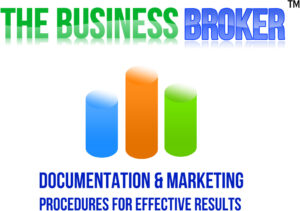- Business Broker Services:
- If you’re looking to buy or sell a business, our brokerage services are designed to facilitate smooth transactions. They ensure that both buyers and sellers are satisfied.
When it comes to selling your business, a well-structured approach is essential for success. Let’s break down the key techniques involved:
- Qualified Target Marketing:
- Develop a prospect list that includes local individuals with significant financial resources, independent industry players, and national management organizations actively seeking business expansion.
- Utilize direct marketing and personal contact to identify and qualify prospective buyers.
- The goal is to generate multiple offers, and negotiations will be conducted with the highest bidder.
- Documentation:
- During the marketing phase, prepare a comprehensive business sales memorandum.
- Prospective buyers will use this document to assess the purchase price they are willing to pay for the business.
- It also helps you determine your acceptable terms.
- Confidentiality:
- Sign a confidentiality agreement initially between the owner and the broker.
- Qualified prospective buyers will also sign a confidentiality agreement before receiving detailed company information.
- Anonymity:
- Marketing materials will provide information about the subject company without revealing its identity.
- The company name will only be disclosed after the prospective buyer signs the confidentiality agreement.
- Publicly Undisclosed Transaction:
- Keep customers, vendors, and other parties unaware of the pending change of ownership during negotiations.
- All involved parties are bound by confidentiality agreements.
- Third-Party Negotiation:
- Rely on the broker to intermediate and communicate directly with prospective buyers, attorneys, accountants, and other stakeholders.
- This allows you to maintain a relatively detached role in direct buyer interactions.
Remember that a strategic and confidential approach enhances the chances of a successful business sale. If you have any specific questions or need further assistance, feel free to ask!
Our services can include the following:
- Prepare a Confidentiality Agreement
- Write a Summary Outline of the Business
- Write an Executive Summary
- Detail Line-Item Sales History, 3-5 years
- Describe Market and Market Players
- Review Operations — Sales, Administration, Production, and Distribution
- Outline Key Vendors
- Detail Assets, Review and Value
- Detail Personnel List and Review Wage Rates
- Prepare a Historical Financial Review
- Assess the True Value of the Business
- Find a Qualified Buyer
- Structure the Condition of Sale
- Execute the Negotiations with Buyer
- Close the Sale with the Mutual Agreement of both Buyer and Seller
Making your business more marketable, consider the following strategies:
- Business Plan:
- A well-prepared business plan impresses prospective buyers.
- Ensure your plan is properly documented and presented.
- Professional Appraisal:
- Have the business assets professionally appraised.
- Often, equipment or inventory is understated on the company’s books.
- A proper appraisal can increase the real value of assets, benefiting negotiations.
- Dispose of Non-Productive Assets:
- Eliminate inventory that doesn’t contribute significantly to the return on investment.
- Streamline assets to enhance overall value.
- Building Maintenance:
- Spruce up buildings: paint walls, wash windows, clean floors, and organize paperwork.
- Maintain vehicles in good working order.
- Address safety improvements (OSHA compliance) for a positive and safe image.
- Capitalize Improvements:
- Rather than expensing improvements and major repairs, capitalize them.
- Properly accounting for improvements prevents reducing earnings.
- Concise Records:
- Organized and documented receipts and disbursements facilitate quicker decisions for buyers.
- Inventory Valuation:
- Record inventory at market value or cost, whichever is lower.
- Understated inventory affects income and balance sheet valuation.
- Address any overstatements as well.
- Realistic Bad Debt Reserves:
- Avoid excessive bad debt reserves, which reduce both assets and earnings.
- Transition Planning:
- If leaving the business after the sale, downplay personal roles and achievements.
- Highlight the quality of employees, products, and local service.
- Fair Pricing with Professional Assistance:
- Work with a professional to price the business fairly.
- Prospective buyers are knowledgeable about true business values.
- Additional considerations when buying or selling a restaurant:
- Average food cost
- Number meals per day / week.
- Business interruption / seasonality
- Property or landlord considerations
- Rent / Common area maintenance.
- Advertising campaign and cost.
- Off the books compensation – owner / employees.
- Cash Flow verify.
- Condition of equipment and equipment FMV
- Transfer of Liquor License
- Current business liabilities
- Reputation in local community
Remember that a well-prepared business, accurate valuation, and transparent records enhance marketability. If you need further guidance, feel free to ask! Call or email request for our Business Checklist and how we can help to prepare your Sales Memorandum.
All new clients may receive upon request, Joe Quicquaro’s publication “THE BUSINESS BROKER” that will outline the process of preparing the sales memorandum and the critical steps to selling your business for the highest possible price in the shortest period of time.





